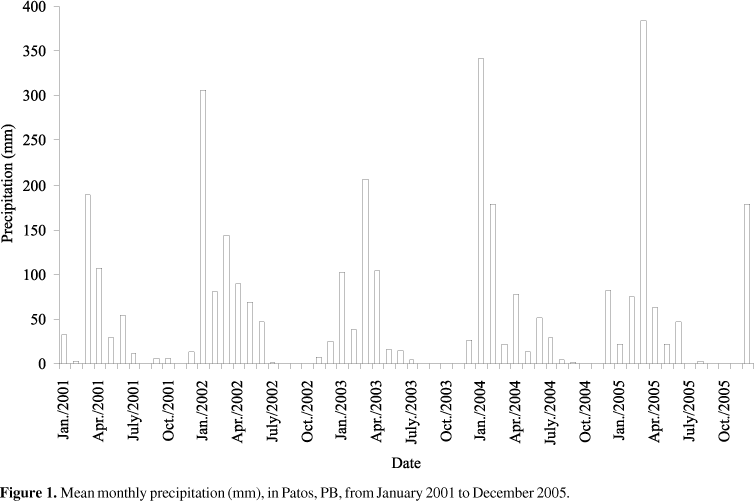The objective of this work was to compare forage production and quality of thorny and thornless "jurema-preta" (Mimosa tenuiflora (Willd.) Poiret) in a dense planted stand, subjected to annual pruning of fine branches, in Patos, PB, Brazil. The experiment consisted of two treatments (thornless and thorny "jurema-preta") in a complete randomized block design, with ten replicates of two linear plots subdivided in time. Forage mass and chemical composition of fine branches and the basal diameter of plants were measured during five years. Pruning decreased (p<0.05) increments in basal diameter and forage production. Annual dry matter yields reached 4,108 and 5,833 kg ha-1, respectively, for thornless and thorny plants, and forage quality was similar (p>0.05) for both genotypes. This roughage fodder (minimum NDF and ADF averages were 56±1.1% and 43±1.0%, respectively) had low P and K concentrations. Its average crude protein content was greater than 9.9±0.5%, which exceeds the minimum necessary for animal maintenance. Both "jurema-preta" genotypes tolerated pruning of fine branches and contributed with a significant amount of roughage fodder for animal maintenance in the dry season.
Mimosa tenuiflora; semiarid zones; legume tree





